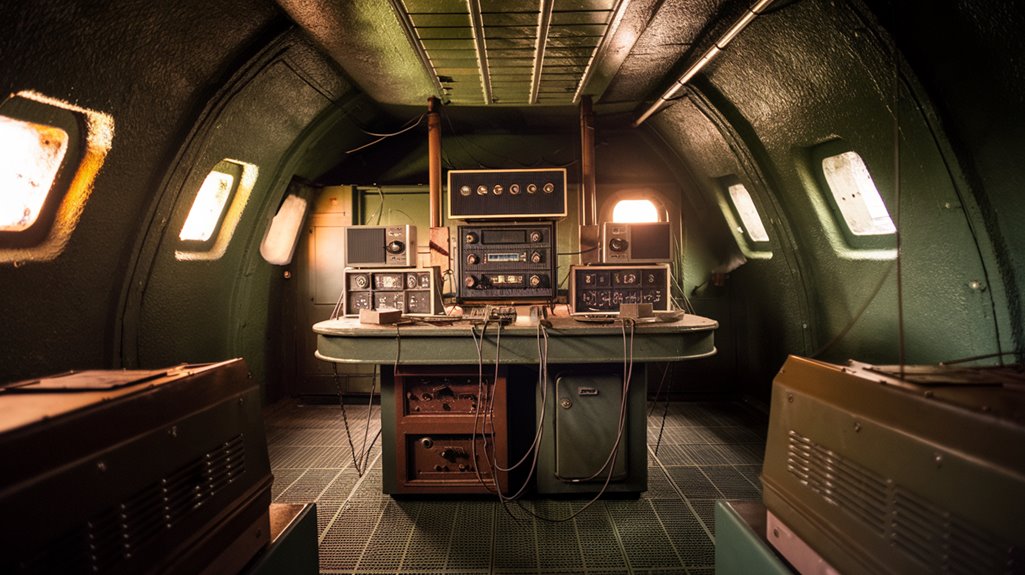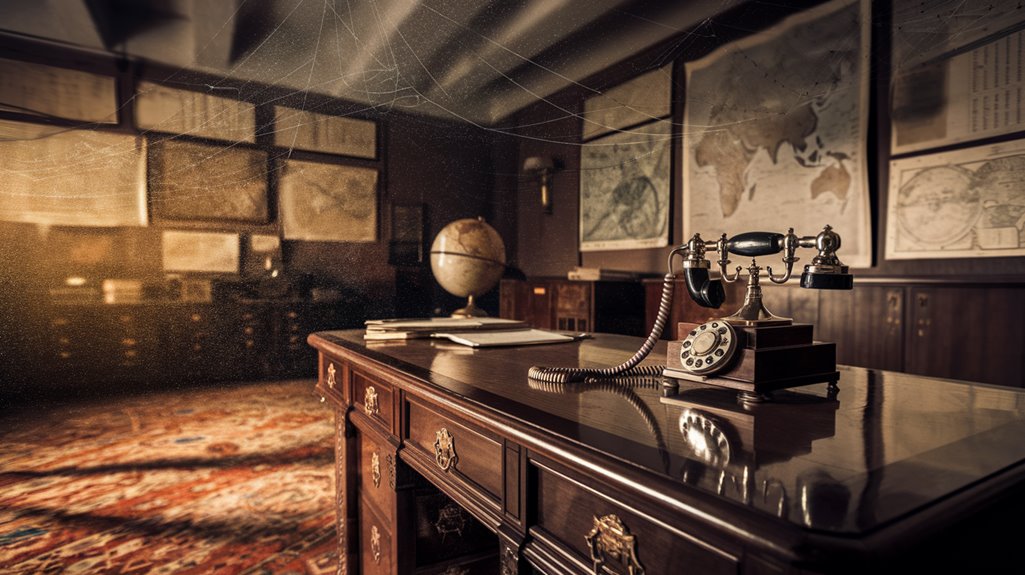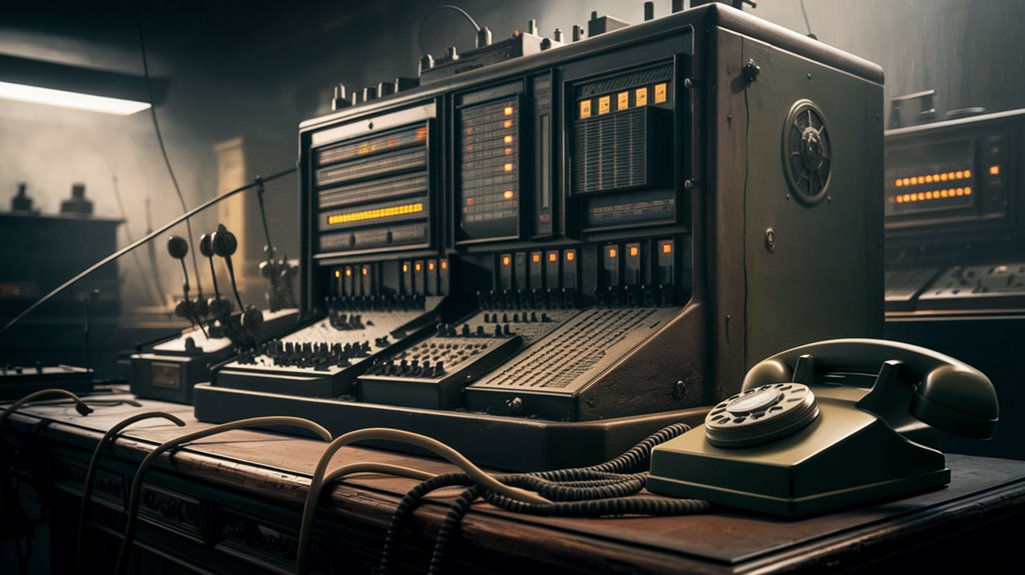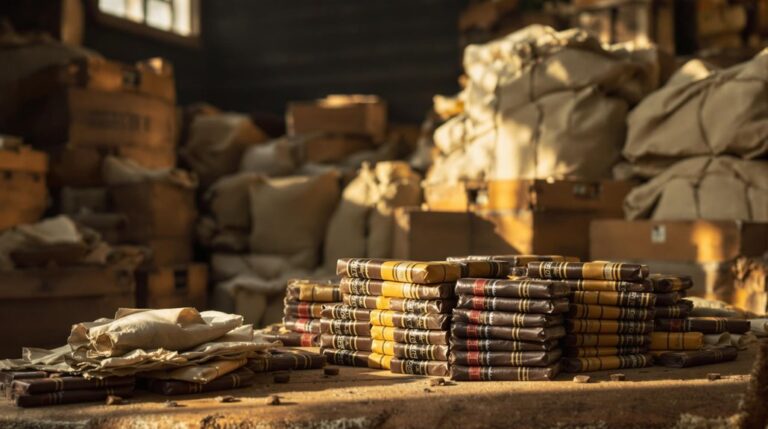No Red Hotline: The Secret Cold War Line That Saved Humanity
Did you know that for nearly 60 years, people have believed a bright red telephone connected American presidents directly to Soviet leaders? You won't find this mythical hotline in any museum because it never existed. Instead, a far more practical system of teleprinters and telegraphs served as the crucial link between these nuclear superpowers. This lesser-known communication channel helped prevent global catastrophe during the Cold War's most dangerous moments, and its true story reveals how close we came to the unthinkable.
The Cold War's Hidden Emergency Channel

While many people imagine a "red telephone" connecting world leaders during the Cold War, the reality of emergency communications was far more complex.
You'd find sophisticated radio rooms serving as nerve centers within fortified bunkers, where emergency protocols directed crucial information across North America. Deep within Canada's Diefenbunker, the CBC Radio Studio enabled vital government communications to citizens.
The Emergency Radio Station system wasn't just a backup – it was a critical lifeline connecting military bases throughout Canada and the United States. Alongside these systems, shortwave numbers stations broadcast coded messages to intelligence officers operating in foreign territories.
When Strategic Air Command needed absolute certainty in nuclear communications, they turned to the Emergency Rocket Communications System (ERCS).
From 1967 to 1991, this covert communications network used UHF transmitters mounted on Minuteman missiles to guarantee command and control would survive even a nuclear strike.
It's a demonstration of how far military planners would go to maintain communication in humanity's darkest hour.
Debunking the Red Phone Myth
Despite its iconic status in Cold War pop culture, the famous red telephone connecting U.S. and Soviet leaders never existed.
What you'll find surprising is that the actual hotline wasn't even a phone at all – it was a sophisticated teleprinter system established in 1963.
The popular "Red Phone" myth gained traction through 1964 movies that dramatized communication between world leaders.
You've probably seen these depictions: a bright red phone sitting on the President's desk, ready for urgent calls to Moscow.
Before the hotline, President Truman established CONELRAD in 1951 to communicate emergency information during potential enemy attacks.
In reality, the system used text-based messages, with the first test reading "The quick brown fox jumped over the lazy dog's back 1234567890."
The system utilized duplex wire telegraph circuits to ensure reliable communication between nations.
While these communication myths persist in media, the true hotline served a vital purpose: preventing nuclear war through clear, direct messaging between superpowers, free from diplomatic delays or misunderstandings.
From Telegraph Lines to Satellites
As the Cold War escalated, communication systems evolved far beyond simple telegraph lines into complex networks of landlines, radio stations, and early satellite technology.
You'll find that these telegraph innovations laid the groundwork for more sophisticated systems, like the Ottawa Semi-Automatic Exchange, which revolutionized secure military communications.
Defense spending and innovation led to integrated digital networks that transformed both military and civilian communications capabilities.
The establishment of teletype machines in 1963 eliminated the need for voice communications that could lead to misunderstandings between leaders.
Here's how communication networks advanced during this period:
- Underground landline systems spanned 90 km of copper wire, connecting bunkers while masking their true locations.
- Radio stations operated from multiple locations, ensuring continuous broadcast capabilities even if main transmitters were damaged.
- ARPANET emerged as a decentralized network, designed to maintain communications even if parts of the system failed.
These satellite advancements and communication breakthroughs weren't just technological achievements – they were vital safeguards during a period of global tension.
Crisis Management in Action
During the Cuban Missile Crisis, crisis management proved essential for avoiding nuclear catastrophe.
You'll find that the U.S. government's crisis response strategies focused on carefully diagnosing the situation and evaluating multiple options, from air strikes to naval quarantines. The chosen path of implementing a naval blockade demonstrated a measured approach to contain the threat while avoiding immediate military conflict. The discovery by an American U-2 spy plane revealed Soviet nuclear missile sites in Cuba, prompting immediate action. The situation exemplified how unstable peace can rapidly deteriorate when diplomatic channels fail.
Communication protocols between Washington and Moscow revealed both strengths and dangerous weaknesses.
When Khrushchev sent contradictory messages to Kennedy, it highlighted the critical need for clear, direct channels. The leaders' ability to understand each other's positions ultimately led to a resolution: Soviet missiles would leave Cuba in exchange for America's non-invasion pledge.
This experience shaped future crisis management by emphasizing the importance of reliable communication and careful diplomatic navigation during high-stakes confrontations.
Security Behind the Scenes

Behind the tightly guarded walls of Cold War facilities, an intricate web of secure communication systems protected vital intelligence and military operations.
You'd find state-of-the-art secure technologies like Faraday cages at the Ottawa Semi-Automatic Exchange and Burroughs 4800 computers processing classified data.
At the heart of cryptographic measures was the sophisticated Fialka encryption machine, which offered unparalleled security with its:
 classified until 2005 being the true extent of the Fialka's capabilities.
classified until 2005 being the true extent of the Fialka's capabilities.
The Legacy of Silent Prevention
While nuclear tensions threatened to spark global conflict, a complex network of espionage and intelligence operations worked tirelessly to prevent catastrophe.
You'll find that silent diplomacy played an essential role, as operations like the CIA and MI6's joint ventures gathered critical information about Soviet capabilities and intentions. The U.S. military's development of precision strike capabilities proved crucial in deterring Soviet aggression without direct confrontation. The U.S. and Soviet Union found common ground through nuclear nonproliferation efforts, demonstrating rare cooperation during tense times.
The legacy of these prevention strategies extends beyond mere espionage. Through intelligence ethics and carefully calculated moves, both sides maintained a delicate balance.
You can see this in how the Soviets handled Operation Gold – even after discovering the tap through their mole George Blake, they let it continue to protect their source.
These behind-the-scenes efforts, including strategies of inhibition and satellite surveillance, ultimately helped prevent the Cold War from turning hot, demonstrating how covert operations preserved global stability.










